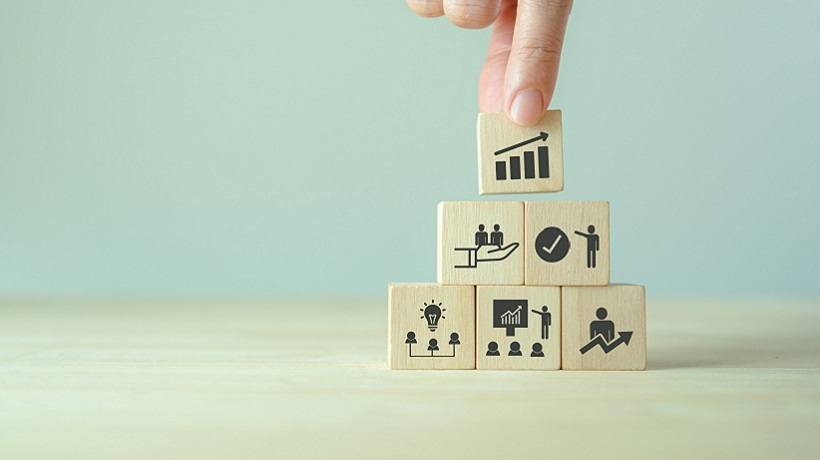Unconscious bias: Identifying and Unlearning
 Omer Usanmaz
·
9 minute read
Omer Usanmaz
·
9 minute read
Preconceived notions cannot dictate a person's worldview, the same way prejudices and stereotypical biases are often far from reality. Unconscious bias does not explicitly come out through one's words but actions. Between the lines lies the story untold about the way people operate. To understand where unconscious biases come from, you must understand why they come first. It is a survival instinct; human brains are tuned to gather data and jump to conclusions. In what can be termed a knee-jerk reaction to how people operate in a new environment, the first course of action is to find something familiar for building conversations and connecting to that familiarity point. With the world grappling with hybrid working models, it is a much more critical step to address these discussions between lines and between people.
An educational approach starts with educating yourself on what surrounds your reality. Look around your office to understand the density of white and English-sounding names and compare them with ethnic ones. Learning and unlearning is a continuous process, and you will make the world slightly better at the end of this road.
Types of bias
Stereotypes are a layered topic to shed light on because they don't just hurt while shortlisting a candidate but, further down the line, get unrealistic quickly. These presumptions limit a person from a disadvantaged position to not speaking up, and they propel a person with an advantage to take unfair advantages over being dominant in a country like the US. For example, in the US, black people are often subjugated to unfair review processes that don't apply to white people.
1. Affinity Bias
People like to be around people like themselves; on the other side, they don't go out of their way to meet and welcome people who are unfamiliar and different from who they are. This bias is generally seen in media and politics, where the political leaders often spew words intentionally to target this factor that makes them different, based on race, country of origin, or even religion. The problem is layered enough to seep into the recruitment process; for example, in this 2017 study done in London, it's understood that from a predominantly-white hiring system, the patterns say primarily white people are shortlisted even if there are options.
2. Attribution Bias
Personal prejudices and behaviors are often under-spoken because it's easy to justify them with the version of what the person thinks the world is. When it comes to helping or even understanding what peers or the people working with the individual go through, assume it's their lack of intent. This bias happens the most in hierarchical workplace cultures in specific. Putting yourself in others' shoes is a practice you must consciously teach to understand the factors leading to the problem. Understanding a problem is a problem half solved.
3. Confirmation Bias
Confirmation bias is a bias that reaffirms one's beliefs and re-establishes their predetermined opinion. If one's understanding and empathizing with a team member comes from a place of "prove me wrong or prove me right", every situation is viewed through that lens. For most, the media is a portal for understanding cultures beyond who one is and what's around them. But what if the media consumed is riddled with the same problematic social identities that are problematic? They must teach themselves how the world works through screens and other avenues. And even if they know these notions are false, they might even surprise themselves to meet people who defy them because they believe in them unconsciously.
4. Affirmative Bias
The thought of a Hollywood Actor, an NBA Player, or a tech support specialist, first images that come to mind are often of a white male, a black male, and a brown person. These instances are the implications of a world that runs on convention and puts down whatever doesn't agree with their point of view. This bias is an example of an implicit race bias where they address how people base their biased response on what they already believe. Expecting someone to be better than someone else based on where they come from is a form of bias that people need to address in a worldview with an equity lens. The same happens when it is the other way around, in a negative light.
5. Halo Effect
The Halo effect should be described as preferential treatment of a person and having a positive outlook due to a specific aspect of theirs. Taking advantage of a closer relationship with a peer or a senior comes under this form of bias. There are several factors and examples for this bias, and good people can be inefficient workers too. One could be a phenomenal person outside the confines of the office, but that should not be considered when an objective analysis of their work is being done. A systematic approach to understanding this comes more from horizontal work cultures where the one-on-one opinion does not matter as much as the opinion of everyone involved.
How can you identify bias patterns?
1. Systemic biases
Biases being formed in individuals are not entirely a product of their cognitive processes but the way a person has been brought up and the way they remember families talking about a minority. This bias is where a broader light has to be put on how the system supports these social ladders. These are not solely about race, religion, or gender, but this can happen for many reasons. For example, this era in the job sector promotes referrals; they are designed so that familiarity and vouching for them in place for someone's input can push the company further. But this too is a form of nepotism and can lead to the company stagnating on the diversity front.
The relationship between a company's identity and what it does to address individual social identities will form the company's future. Several companies have put pen to paper and made a note of what can be an actionable goal and what can be an achievable goal. Intersectionality is now a priority in the list of things the hiring team must keep in mind so that fresher, broader ideas and perspectives are not missed. Ideas like blended teams and working with similar people push the envelope further to come into the picture.
2. Healthcare system
Bias in healthcare professionals is a rather unfortunate by-product where it shouldn't be. Implicit bias recognition is necessary in the present times, especially in the healthcare system, where an unbiased response is of paramount importance. Family physicians are trained to be empathetic to everyone's unique needs and are often keen on leading teams to identify the blind spot whenever and wherever necessary.
The form of gender bias in a place like a hospital leads to the notion that an attending physician is supposed to be male and an attending nurse is supposed to be female. Implicit bias recognition is necessary so that no one goes through a bias that comes from thoughts not given the time to form; it happens right before their eyes. In the healthcare system, bias in healthcare providers comes from traditional stereotyping and profiling a patient before they know anything about them. The lack of time is often why the system fails to recognize its pitfalls. The need to condone such attitudes in the fight for health equity picks the pace again.
Sensitization processes have started in hospitals to address the issues caused by automatic responses. The process of improvement is in place. Family physicians are responsible for addressing the issue the best because of their bond with the patients that come to them.
3. Personal Self Awareness
One of the tools that are being taught is the logic of substitution. If one says different things to different people depending on their social identities (race, sexual orientation, where you are from), there's also a need to address why it is done. The simple question of why they perceive people around them from the way they perceive themselves is the one that needs answers. The word "inclusion" doesn't just mean letting people into the company feel diverse. Every individual deserves a chance to aim for the leadership teams, to realize the goals and ambitions they've come to expect from the company. Investing in the recruits for the long run is the goal.
If your experience with one of the people who are different from you makes you tag that group through your lens, this is called experience bias. This perception of tagging is easy for your brain because it doesn't involve analyzing. When they judge someone before they know anything about them, it's often treated as a mistake and a miss they can afford. But when one harbors prejudices they didn't know about, they need to see it as a sign that they should be better than the bare minimum.
Lost in the corporate world, they can also look into what they learn from their social circle. Every individual deserves a chance to aim for the leadership teams, to realize the goals and ambitions they've come to expect from the company. Coworkers and bosses who maintain contact with people who work in a different capacity beyond the confines of a cubicle are likely to understand what they're missing out on from their personal experience. Putting in the effort to know people who do not live the way they do is at the crux of this exercise. The stereotypic biases fall apart when confronted with the real people; that's something to learn and inculcate.
Media Habits
What one consumes on social media profoundly impacts forming unconscious biases; it often arises from a dopamine overload. There's a reason why social media is addictive, and you cannot start to dissect it until you understand that humanity loves belonging somewhere. Diversifying your portfolio is a finance term used to describe a practice in stock markets to stabilize your income from the markets. Apply the same logic to the content you put yourself through daily.
Compare what's in the mainstream with what's not; you can also learn the opinion from a voice of a minority. Follow a few minority celebrities, analyze one version against the other, and refuse to be polarized. Another promising approach would be one where you learn to empathize with the people who go through biases by being different. Learn about the differences that make you understand a community; you'll never broaden your horizons by doing the same thing you've been doing.
Triggers
A corporate lifestyle expects the body to function linearly, but as dynamic as humans are, they are not perfectly linear. One of the reasons biases trigger is the fatigue settling in; it has to be a conscious effort to check yourself for fatigue because no one else can do it for you. One cannot make big decisions on an empty stomach because when they must hasten the process of making a decision, this is where they subconsciously go for an automatic response instead of a thought-out one. The brain will always choose the easier way out of a problem where there isn't one. It's a personal responsibility to understand whether what is being read and analyzed is genuinely bad, or it's the easy route once again.
Addressing bias through structures
Representation matters, especially from the mainstream media one regularly consumes to know how they experience the life around us. If a team leader comes from a non-white background, it makes the non-white team members feel like they have someone to look up to and be inspired. To address implicit biases, companies should move towards actionable steps where they have people from diverse backgrounds contributing to the diversity goal.
A systematic approach is necessary to take actionable steps towards equity. Starting from the grassroots level, the recruitment process. Unintentional discrimination is often seen when a company lacks diversity and intersectionality and forms an insular culture within the systems. As the world gets to realize what systemic biases mean, one can see where a few communities are taking the initiative to become better.
Name-blind admission processes were tested for admissions in a few select universities in the UK to address the bias attached to what can get the best people to the places they deserve to be. Likewise, blind CV reviews are being conducted by companies like Hangar 13 to see what could be made to make space for everyone. Moving away from gender pronouns and reducing the number of must-have/requirements mean bigger sample size for the company to choose and shortlist. It is not a one-shot solution to all problems, but it is a critical step in the right direction with the right intention.
There's a lot to unpack about why the way of approaching people is different from one another. Either implicit attitude or explicit attitude, one's understanding is taught through their experience of the world. An educational approach would start from how a person views the world around them to how they've taught themselves about the world. A conscious practice would be to question your biases and where they started. It might be challenging initially, but eventually, one step taken by everyone together drives a collective difference.
The corporate ecosystem is cultivating a method to take time and address these issues through unconscious bias workshops and acclimatizing the people around where there might be an issue. These workshops help in implicit bias recognition because once it's understood where they go wrong, they can begin to understand where they need to change. Every bias cannot be addressed in the unconscious bias training, and it is not a one-time thing at a go, but the progress begins when they can begin the journey.
1. Leadership trials
The relationship between identity and ideas comes from how a few companies have rejigged their internal structures after a review. Growth stagnates when the experience of the thought leaders and team leaders are more or less constantly on the same page. There's a reason why celebrities without a background in the spotlight aim and become the greatest; Louis Armstrong and Sir Lewis Hamilton are perfect examples of minority celebrities. They had humble backgrounds, backs against the walls, yet they persevered and became the kind of people the music and sports fraternity cherish, celebrate, and remember fondly. And it's because they fought back.
Self-awareness is uncomfortable sometimes because of how gender bias translates into a form of a blind spot, even if it is right there, the fact that hierarchies exist based on how much the salary is and how much is spent. To skip snap judgment and understand why it's happening, many organizations are doing what an actual step at addressing the problem at large is.
2. Blended teams
Sensitization for topics such as implicit race bias is something that the world accepts as they get to know people with people. The value of diversity to a team with a direct means they can address their biases just by being and understanding what the team member is trying to say. Unconscious bias workshops have been effective in bridging the gap between the team members to perform better in a smooth manner.
Addressing implicit race bias, half of what knowledge and understanding do, experiencing the feeling of belonging in the place completes. Blended teams also allow the people involved to first-hand experience a world they only have heard about through references. There's nothing to lose and everything to gain as people extend their horizons to become beyond what they are.
Managing implicit biases to foster conducive workplace environments
Uncomfortable conversations start the dialog of what needs to be addressed; when someone takes the courage to stand up and talk about how they've felt about these biases. Please give them the freedom to talk without being dismissive about the same. It's a hard step to accept what's wrong within a system you've created, but repairs can happen only when a moment is taken to introspect. Take proactive steps in forming an inclusive environment and addressing equity. Try to address the gray areas and microaggressions when it comes to how feedback has to be communicated. Keep moving towards communicating before assuming and discussing before taking anyone's time for granted.





